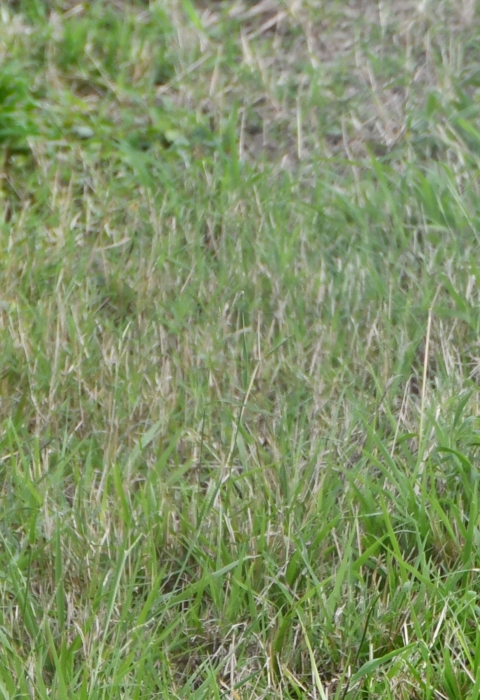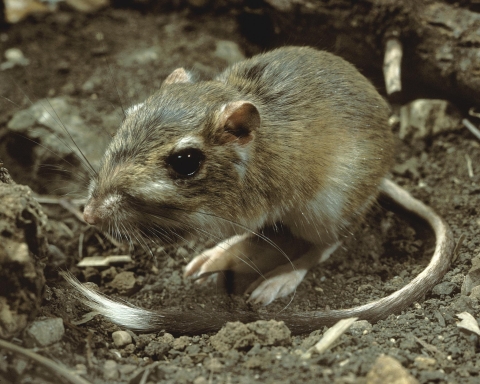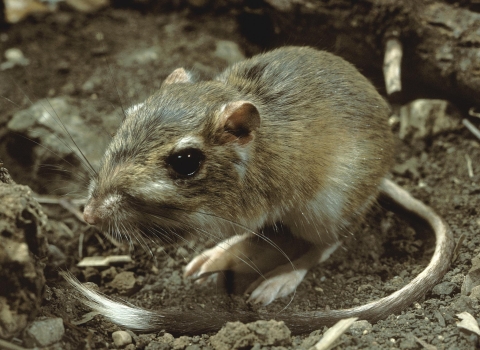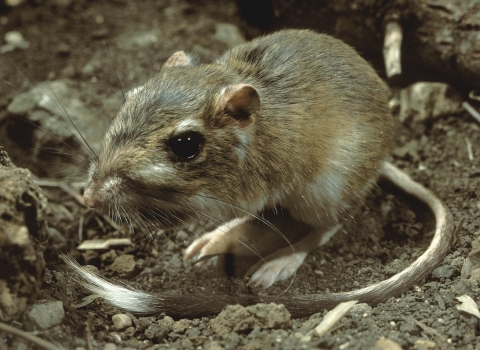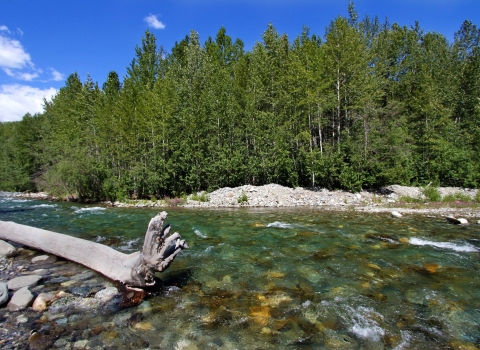The U.S. Fish and Wildlife Service is proposing to list the Texas kangaroo rat, a small nocturnal rodent in north-central Texas, as an endangered species under the Endangered Species Act (ESA). The Service is also proposing designating 597,069 acres in five Texas counties as critical habitat that are essential to the conservation of the species.
“The Texas kangaroo rat depends on native prairie and grassland habitat, but historical land use change has negatively impacted the availability of this habitat in the species’ range,” said Omar Bocanegra, Supervisory Fish and Wildlife Biologist with the Service’s Arlington Ecological Services Field Office. “With this proposal, our goal is to conserve the species by protecting its remaining populations and promoting habitat management practices that favor its survival.”
Under the ESA, species may be listed as either endangered or threatened. “Endangered” means a species is in danger of extinction throughout all or a significant portion of its range.
Primary threats to the Texas kangaroo rat are habitat loss and degradation related to the loss of American bison, black-tailed prairie dogs, and periodic wildfire. Together, these three components helped to create a mosaic of habitat features on the landscape that provided the short grasses interspersed with areas of bare ground and minimal woody cover preferred by the Texas kangaroo rat.
Critical habitat for the Texas kangaroo rat is proposed in six occupied areas that are particularly important for the conservation of the species in Childress, Cottle, Hardeman, Wichita, and Wilbarger counties near the Texas-Oklahoma border.
Critical habitat is defined by the ESA as the geographic areas containing features essential for the conservation of listed species, and which may require special management considerations or protection. Designation of critical habitat does not affect land ownership, establish a refuge or preserve, and has no impact on private landowners taking actions on their land that do not require federal funding or permits.
Non-federal landowners in these proposed critical habitat units may enroll in the associated Texas Kangaroo Rat Candidate Conservation Agreement with Assurances (CCAA) held by the Texas Parks and Wildlife Department. This voluntary tool is available for landowners to gain incidental take coverage for existing and ongoing agricultural activities within the range of the species in return for providing important conservation actions to improve the status of the species.
CCAAs are part of a broader government-led effort to balance the needs of wildlife with those of private landowners, industry and communities through voluntary cooperative agreements. CCAAs provide non-federal landowners and developers the opportunity to implement conservation practices that address specific threats. It also includes assurances that, if the species is later listed, they can continue to manage their land as outlined in their agreements with no additional regulatory requirements. Landowners may enroll in the Texas kangaroo rat CCAA anytime between now and the effective date of a final rule listing the species under the ESA.
The Texas kangaroo rat was petitioned for listing in 2010, and the Service found the petition presented substantial information that listing may be warranted in 2011. This listing and critical habitat proposals are based on the best available science, including a Species Status Assessment Report that included input and review from academia and state agencies.
The proposal to list the Texas kangaroo rat as endangered and designate critical habitat will publish in the Federal Register on Aug. 17, 2023 and public comments will be accepted until Oct. 16, 2023. We encourage the public, academia, federal and state agencies, industry and other stakeholders to review the proposal and provide comments.
Frequently asked questions about this proposal can be found here.
